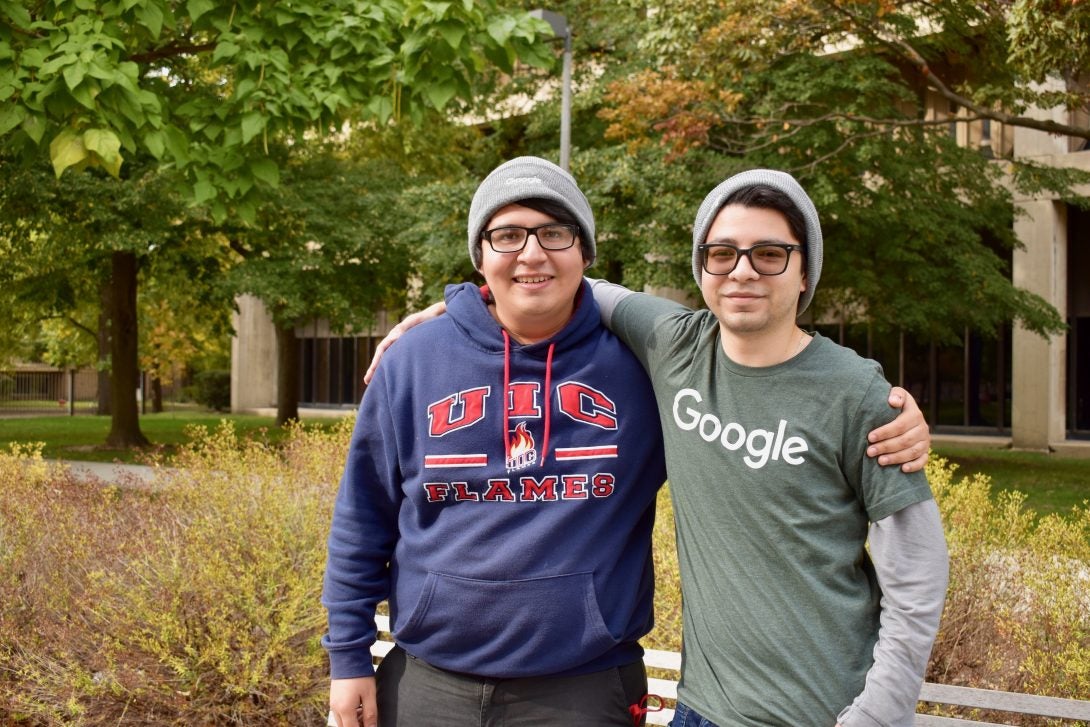Google’s Hispanic Leadership Summit Chicago tailor-made for some UIC computer science students
Google’s Hispanic Leadership Summit: Chicago tailor-made for some UIC computer science students Heading link

This fall, Google hosted a series of Hispanic Student Leadership Community Summits, in partnership with the Hispanic Association of Colleges and Universities. One of these events was held at the Chicago Google office, drawing undergraduate student leaders from around the Midwest. Approximately 20 UIC students attended, including computer science majors J. Jesus Benitez Gorostieta and Luis Samayoa.
The event included a presentation on internships and the hiring process at the company, and was paired with practical experience that would be helpful in a job interview at Google or for any tech job—a sample code problem to solve, a mock interview, resume workshop, and primer on crafting an elevator pitch. The summit also featured a panel discussion that included several Googlers of Hispanic or Latino descent who shared their path to working at Google, and the realities of working for the company.
Samayoa, a senior, said the Latinx focus of the summit made the event feel more tailored to his needs, and Benitez Gorostieta, a junior, is hopeful that Google is trying to grow the Latinx representation at the company from the current level of between three and four percent of their workforce.
“I felt like this summit was directed specifically at my field, for people of my background,” said Benitez Gorostieta.
“The summit made me think about how I could program better,” Samayoa said. “It’s about more inclusivity and programming for everyone. Google is thinking about that. Who are we coding for?”
Samayoa and Benitez Gorostieta said that Google discussed their Pixel phone, and an algorithm the company developed to better detect skin tones and contrast them, and a crowdsourcing effort to deepen the company’s global perspective.
“The crowdsourcing is open to anyone who wants to use it. There is a photo section that will show you a picture, for instance of a ‘bride.’ You can determine if this label correctly identifies the picture. A bride in the U.S. would look different from a bride in India, but with crowdsourcing the algorithm will learn to recognize both as a bride. It will be better globally for users,” Samayoa said.
Benitez Gorostieta presented a lighting talk at the summit, focused on STEM awareness and Chicago youth. He is a computer science instructor for children at his former school, Moraine Valley Community College.
“Some of the kids I teach can’t even read yet; I teach them block code with pictures, and they learn to program from that. Older kids get tougher material. I like to reach out to organizations like SHPE and LOGiCA to help with youth outreach; they partner with schools from the city,” Benitez Gorostieta said. “I grew up in Chicago and CPS is not very well funded. I didn’t learn any programming until I was 20, and wish I was introduced to this stuff earlier.”
He said many of the summit attendees followed up with him, hoping to establish similar outreach efforts at their universities.
Benitez Gorostieta will be participating in Google’s computer science mentorship program this spring, and Samayoa has an upcoming interview for the Google residency program.
“The underlying theme of the summit is hope,” Samayoa said. “When I was younger I was like, Google is a fairy tale, and now it’s possible.”